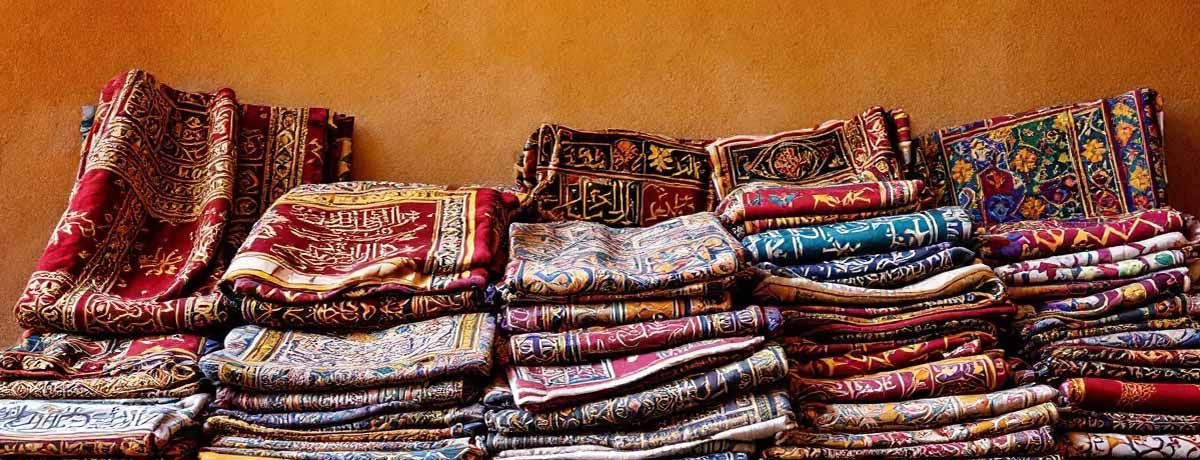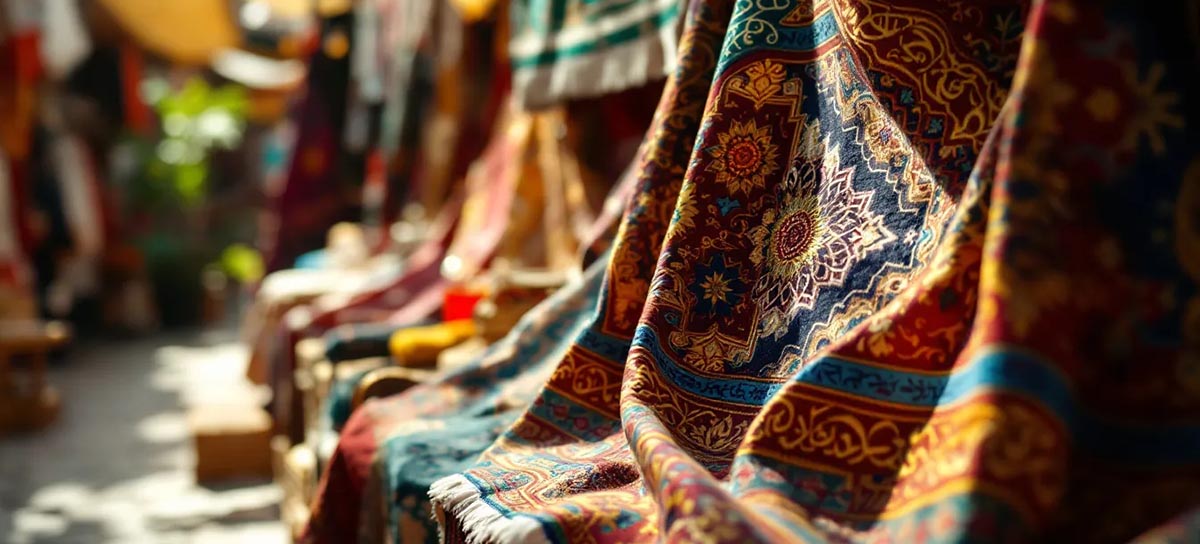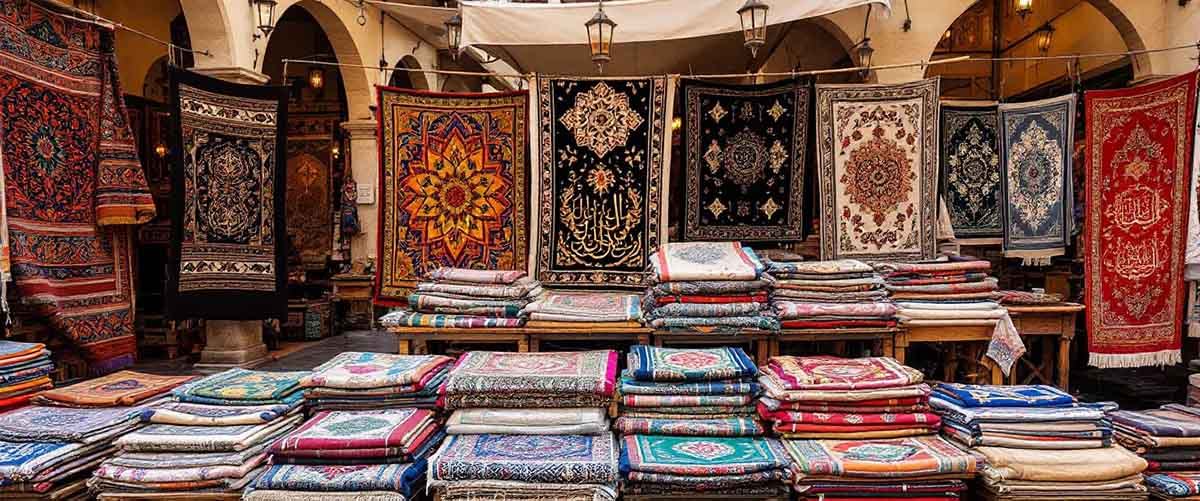Guide to Arab Fabric: Types, Uses, and Care

Arab fabric is celebrated for its vibrant colors, intricate patterns, and cultural heritage. In this guide, you’ll learn about the types of Arab fabrics, their uses in fashion and home decor, and how to maintain them.
Key Takeaways
-
Arab fabric is a rich blend of cultural influences, particularly from Persia and India, showcasing a unique style that has evolved over centuries while preserving its authenticity.
-
The Silk Road significantly contributed to the development of Arab fabrics, enhancing local craftsmanship and allowing for a variety of materials and techniques that inspire modern designers.
-
Proper care is essential for maintaining Arab fabrics, including following specific cleaning instructions and opting for dry cleaning to ensure longevity and beauty.
History and Origins of Arab Fabric

The evolution of Arab fabric is a fascinating tale of cultural convergence and artistic innovation. Influences from Persia and India have significantly shaped its design and production techniques, creating a unique blend that has stood the test of time. Despite these influences, Arab fabric has managed to preserve its authenticity over the centuries, reflecting the rich cultural heritage of the Arab world.
Trade routes played a pivotal role in the evolution of Arab fabric by:
-
Enabling a rich exchange of textiles and techniques between cultures through the convergence of various trade paths.
-
Introducing luxury fabrics like silk into Arab markets, which influenced local fabric styles.
-
Allowing Arab craftsmen to refine their weaving and embroidery skills.
This blend of external influences and local traditions has resulted in the distinctive, high-quality fabrics and style we see today.
The Role of Trade in Arab Fabric Evolution
Trade has always been a cornerstone of the Arab world, linking the East and West and facilitating cultural exchanges. The Silk Road, in particular, had a significant impact on the evolution of Arab fabrics. This ancient network of trade routes allowed for the exchange of materials such as silk, linen, and cotton, which were integral to the development of Arab fabrics.
Access to noble materials enhanced the expertise of Arab craftsmen in weaving and embroidery. This availability of diverse materials and techniques enriched the quality of Arab fabrics and allowed for the creation of new styles and patterns that continue to inspire designers today.
Characteristics of Arab Fabric

Arab fabrics are renowned for their richness and diversity. Key features include:
-
Vibrant colors such as reds, greens, blues, and golds that reflect the cultural richness of the Arab world.
-
Geometric patterns inspired by Islamic art, which traditionally avoids figurative representation.
-
Calligraphy, highlighting the importance of writing in Arab culture.
Modern designers often incorporate these traditional elements into their collections, blending tradition with contemporary fashion trends. This fusion ensures that Arab fabrics remain relevant and stylish in today’s fashion landscape.
Types of Arab Fabric
Arab fabric includes types such as:
-
Polyester: known for its durability and ease of care, making it popular for everyday wear.
-
Cotton: valued for its softness and breathability, ideal for the warm climates of the Arab world.
-
Blends Each type has unique characteristics and applications.
TR fabric, a blend of polyester and rayon, offers both durability and comfort, making it essential for Arab clothing. Satin, with its luxurious sheen and smooth texture, is often used for special occasions and high-fashion garments. This variety ensures a suitable Arab fabric for every need and preference.
Applications of Arab Fabric
Arab fabrics find applications across various fields such as:
-
Fashion, including traditional garments like abayas and thobes
-
Interior decoration, including home décor items like curtains and cushions
-
Art
-
Religion
These fabrics are integral to both cultural heritage and modern living.
Their versatility and adaptability highlight their enduring appeal.
Traditional Clothing
Traditional garments like the jallabiya, caftans, and thawbs showcase the beauty of Arab fabrics. These garments, worn on various occasions, are aesthetically pleasing and hold cultural significance. High-quality fabrics, such as those supplied by MH, are specially designed for traditional Arab garments like the dishdasha and thobe, ensuring comfort and elegance.
The significance of these traditional garments extends beyond appearance, reflecting the art, culture, and social values of Arab communities. They symbolize heritage and identity, making them a cherished part of Arab culture.
Home Décor Textiles
Arab fabrics enhance home décor through items such as:
-
Cushions
-
Curtains
-
Rugs These items add aesthetic appeal, elegance, and cultural richness to interiors. The textiles combine traditional designs with modern aesthetics, creating a harmonious blend that enhances home interiors.
Weaving, embroidery, and dyeing showcase the diverse craftsmanship of Arab textiles, ensuring each piece is unique and adds character and charm to home décor.
Contemporary Fashion
Contemporary designers blend traditional elegance with modern trends by incorporating Arab fabrics into their collections. This fusion creates garments that are stylish and culturally significant. Velvet, a plush fabric with a dense pile, is particularly popular for warm-weather garments and accessories, adding a touch of luxury to contemporary fashion.
The use of Arab fabrics in contemporary fashion allows designers to create unique pieces that stand out globally. Intricate patterns, elegant styles, and comfortable materials make these garments a favorite among fashion enthusiasts.
Care and Maintenance of Arab Fabrics
Proper care and maintenance preserve the beauty and integrity of Arab fabrics. Follow these guidelines:
-
Follow cleaning instructions specific to the fabric type to ensure longevity.
-
Use mild detergents to avoid harsh effects on the material.
-
Wash the fabric inside out to protect the outer texture and design.
Dry cleaning is often the safest option for embellished Arab fabrics to maintain their appearance. Air drying is recommended for delicate fabrics to prevent heat damage from dryers. Following these guidelines ensures that your Arab fabrics remain beautiful and durable for years.
MH: Your Wholesale Partner for Arab Fabrics
MH has over a decade of export experience, demonstrating reliability in serving global clients. Buying fabrics in large quantities often results in significant cost savings compared to retail prices. This makes MH a cost-effective choice for businesses and designers sourcing high-quality Arab fabrics.
Bulk sourcing from MH provides access to a diverse range of fabrics, including various styles, colors, and textures. This consistent supply benefits ongoing projects or business needs, allowing you to meet client demands with ease.
MH is positioned as a one-stop wholesale source for Arab fabrics, serving global wholesale clients only.
Benefits of Bulk Sourcing from MH
Bulk sourcing from MH offers numerous advantages. Buyers gain stronger negotiating power with suppliers, leading to better pricing and terms. Reliable suppliers like MH maintain high quality across their products, ensuring durability and consistency.
Sourcing fabrics in bulk also allows for a consistent supply, crucial for maintaining production flow and meeting customer demands. MH’s long-term partnership with the Middle Eastern fashion and textile industries underscores its reliability and commitment to quality.
Summary
Arab fabric is a rich and diverse element of the Arab world’s cultural heritage. From its historical origins influenced by Persia and India to its modern applications in fashion and home décor, Arab fabric continues to captivate and inspire. The vibrant colors, intricate patterns, and luxurious feel make it a staple in both traditional and contemporary settings.
By understanding the types, uses, and care of Arab fabrics, and recognizing the benefits of bulk sourcing from reliable partners like MH, you can fully appreciate and incorporate these exquisite textiles into your life or business. Explore the world of Arab fabric and let its beauty enrich your creations.
Frequently Asked Questions
What are the main types of Arab fabric?
The main types of Arab fabric are polyester, cotton, satin, and blends like TR fabric, which add durability and comfort. So whether you're looking for something lightweight or sturdy, there's a perfect option for you!
How are Arab fabrics used in home décor?
Arab fabrics beautifully enhance home décor by adding rich textures and vibrant patterns to cushions, curtains, and rugs. They're perfect for blending tradition with contemporary style, making your space feel warm and inviting.
What is the significance of traditional Arab garments?
Traditional Arab garments like the jallabiya and caftans not only highlight stunning fabrics but also symbolize cultural heritage and identity. They connect people to their history and traditions, making them truly significant.
How should I care for Arab fabrics?
To care for Arab fabrics, always follow the specific cleaning instructions and use mild detergents, washing them inside out. For embellished pieces, dry cleaning is best, and remember to air dry delicate fabrics to keep them looking their best!
Why should I source Arab fabrics in bulk from MH?
Sourcing Arab fabrics in bulk from MH can save you money while giving you access to a wide variety of high-quality options and a steady supply for your projects. Plus, with their decade of export experience, you can trust them as a dependable wholesale partner.
Contact MH
MH offers arab fabrics. Please contact us for more details or inquiries. We're here to help!


